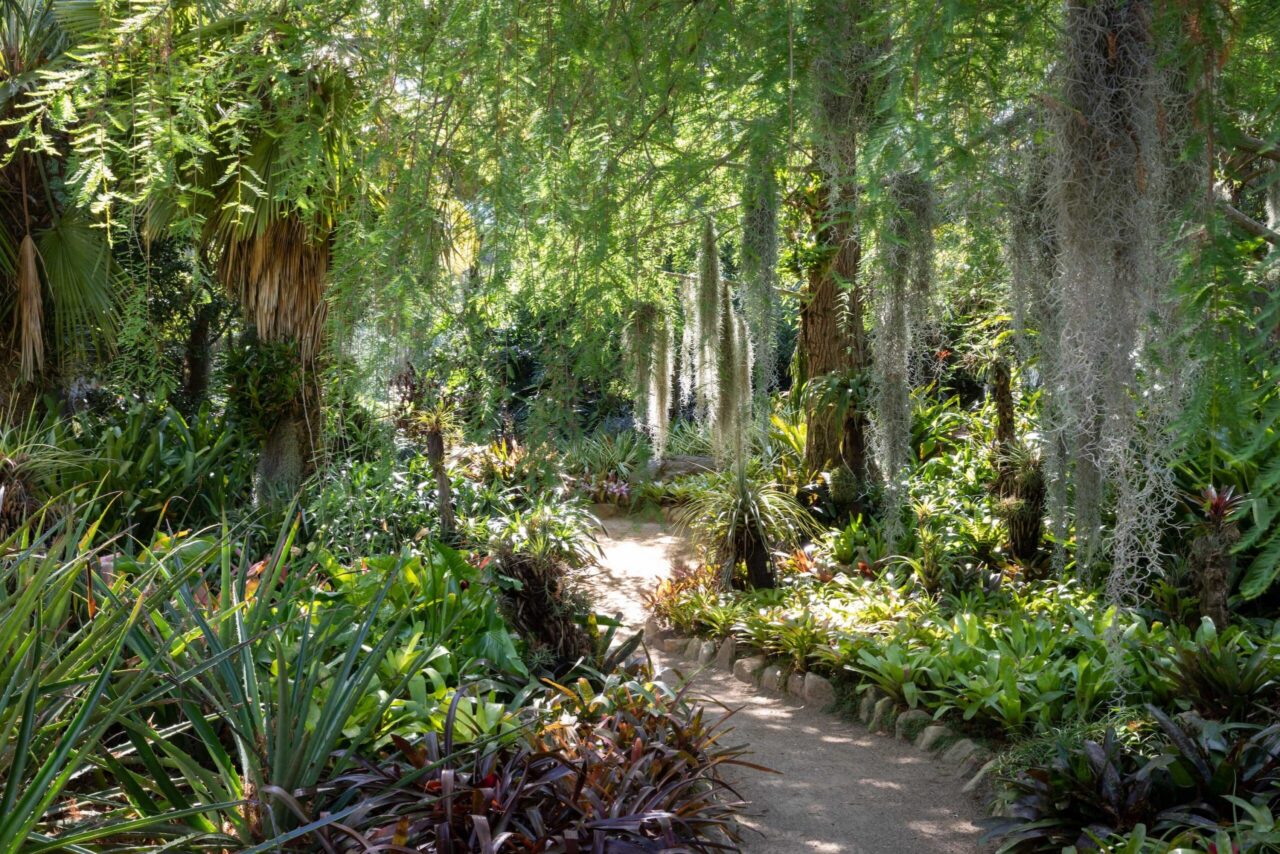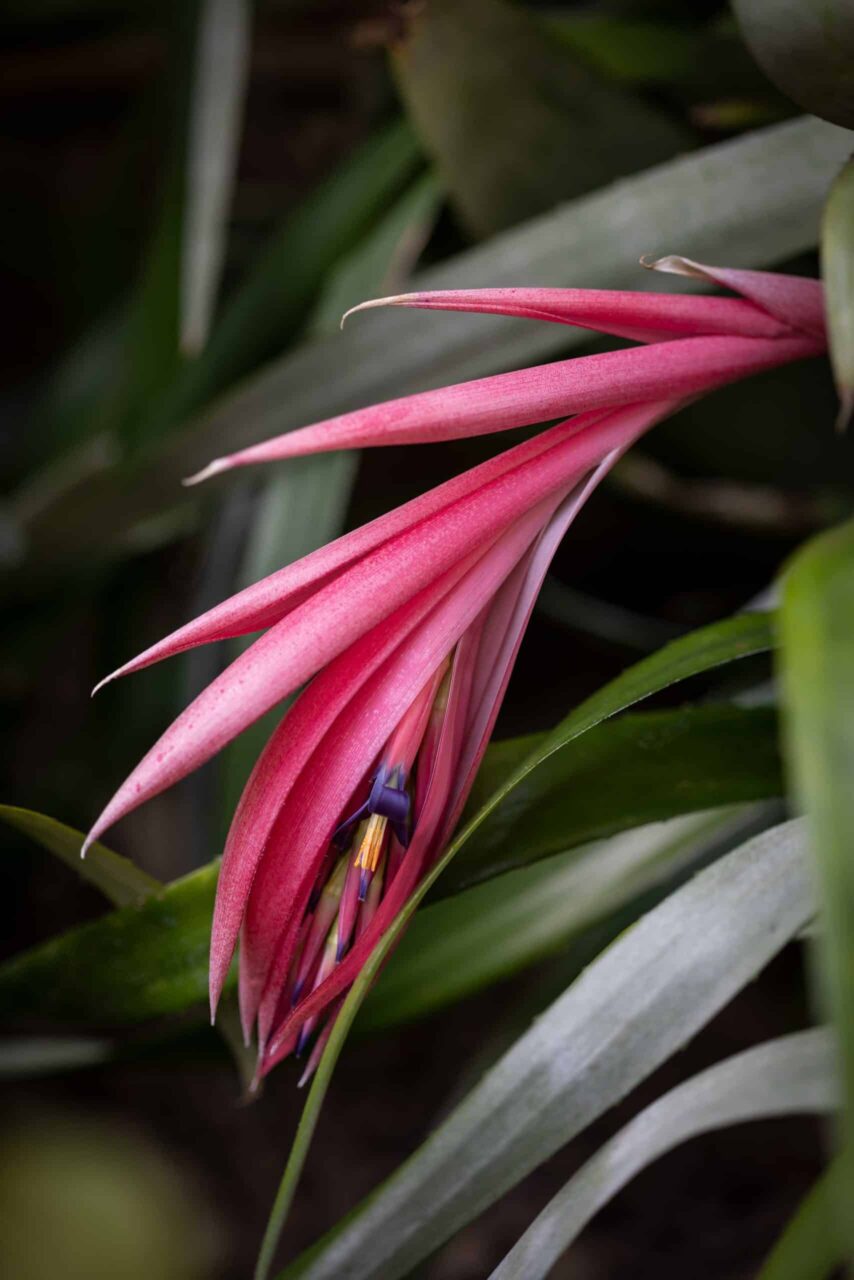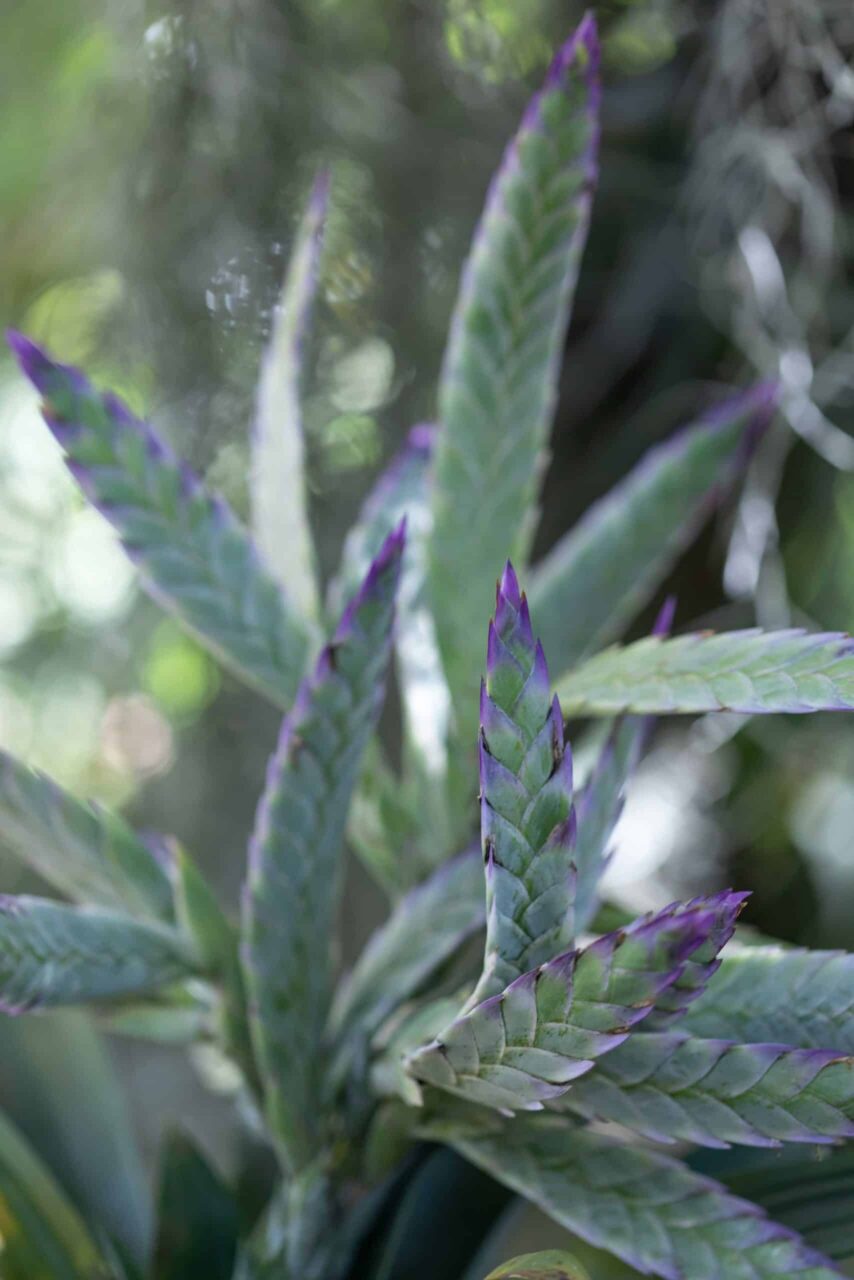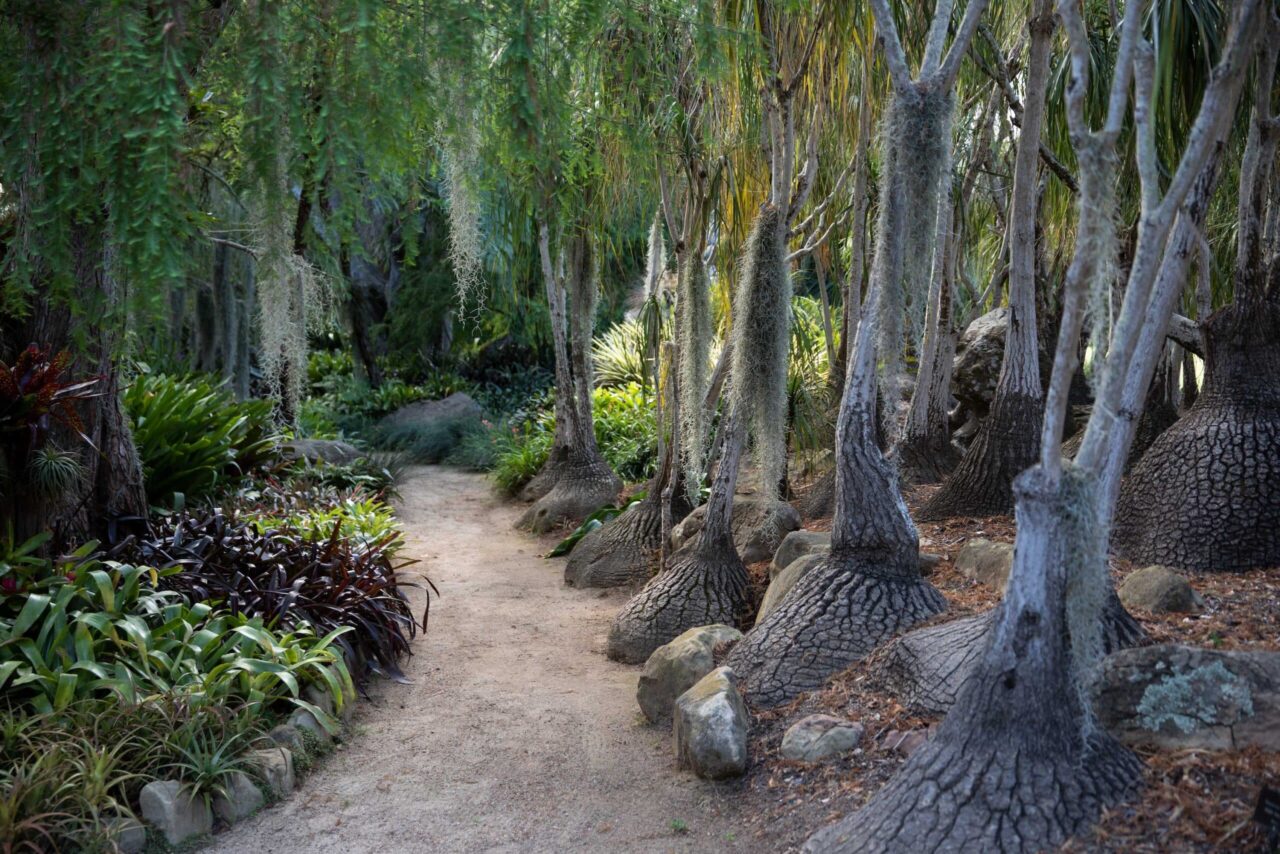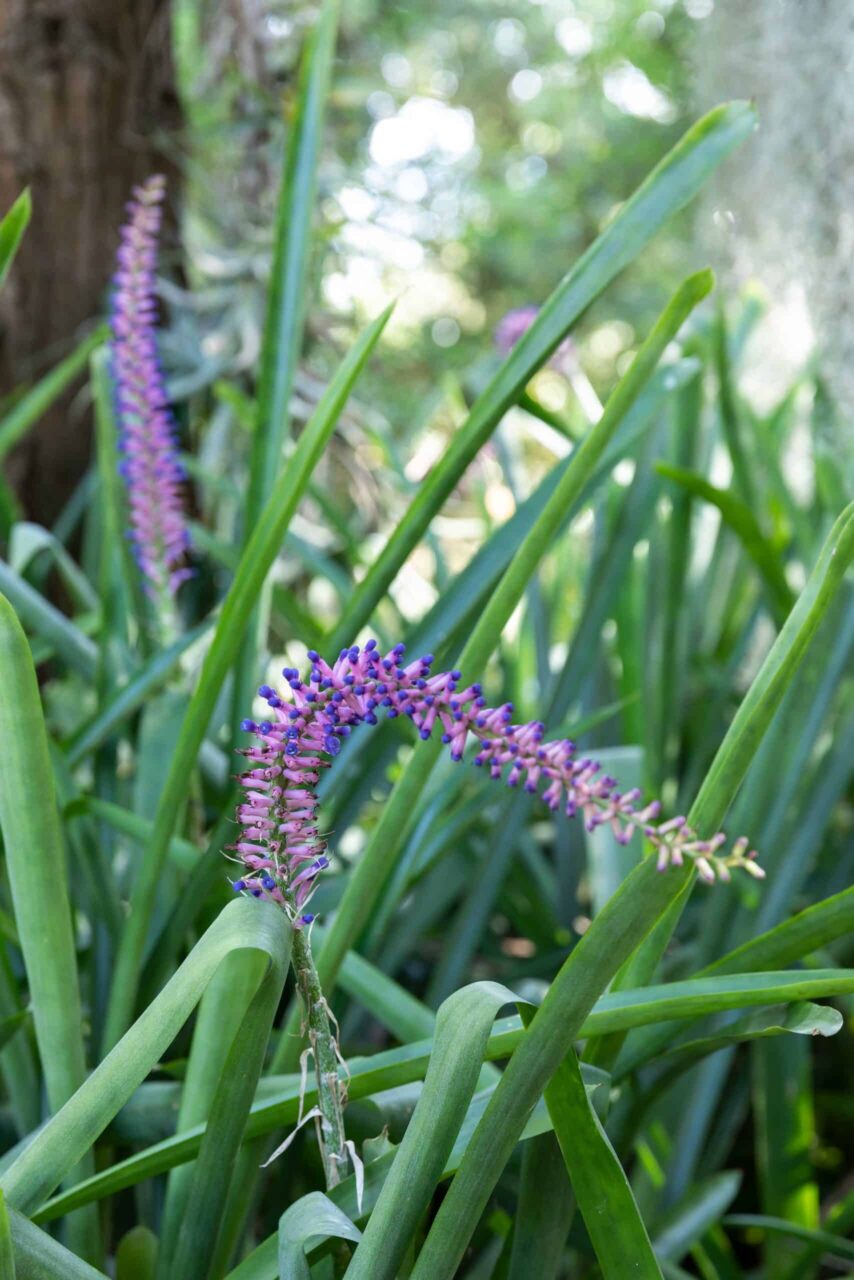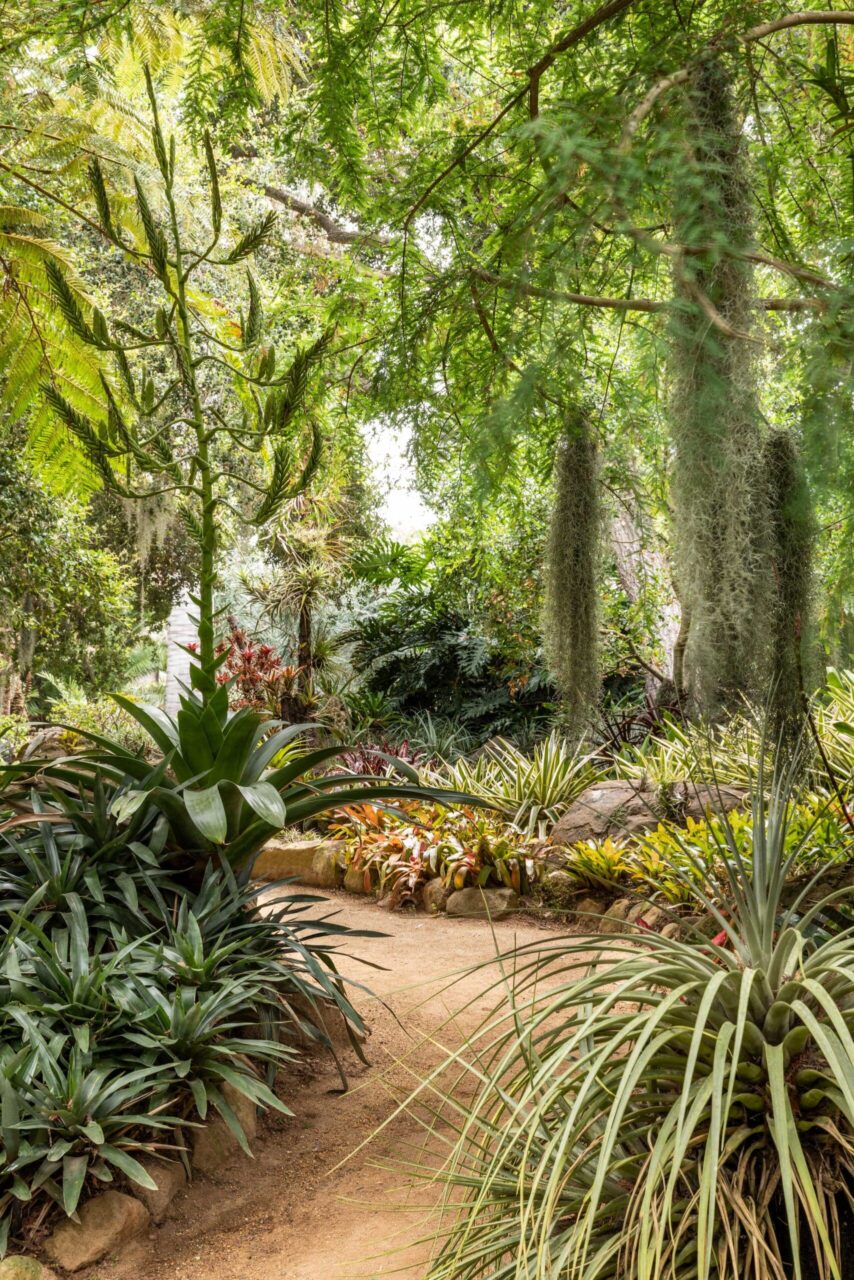Bromeliad Gardens
The pineapple is the most commonly known bromeliad, a diverse group of plants in the family Bromeliaceae
bromeliad gardens
Entering the Bromeliad Garden feels as if you have strayed into another world. A world where Madame Ganna Walska and Mother Nature once painted in harmony with fearless strokes of vibrant pinks, purples, and blushing reds; perfectly framed with dripping Spanish moss and oak branches. A must-see for all visitors. The Bromeliad Garden began outside Madame Walska’s bedroom near the Main House Pavilion, what is now the Upper Bromeliad Garden. Because of their prolific nature, extra offsets were moved to an area across the Main Lawn, in what now makes up the Lower Bromeliad Garden.
the
Noteworthy
Features
Spanish Moss (Tillandsia usneoides)
Bromeliads have tiny epidermal hairs, known as trichomes, that help soak up atmospheric moisture. Trichomes allow Tillandsia usneoides to live an epiphytic lifestyle, without having absorptive roots in soil. Spanish moss was an important economic plant before the development of synthetic packing materials, serving to cushion goods and produce for shipment, and to stuff pillows, furniture cushions, and the like.
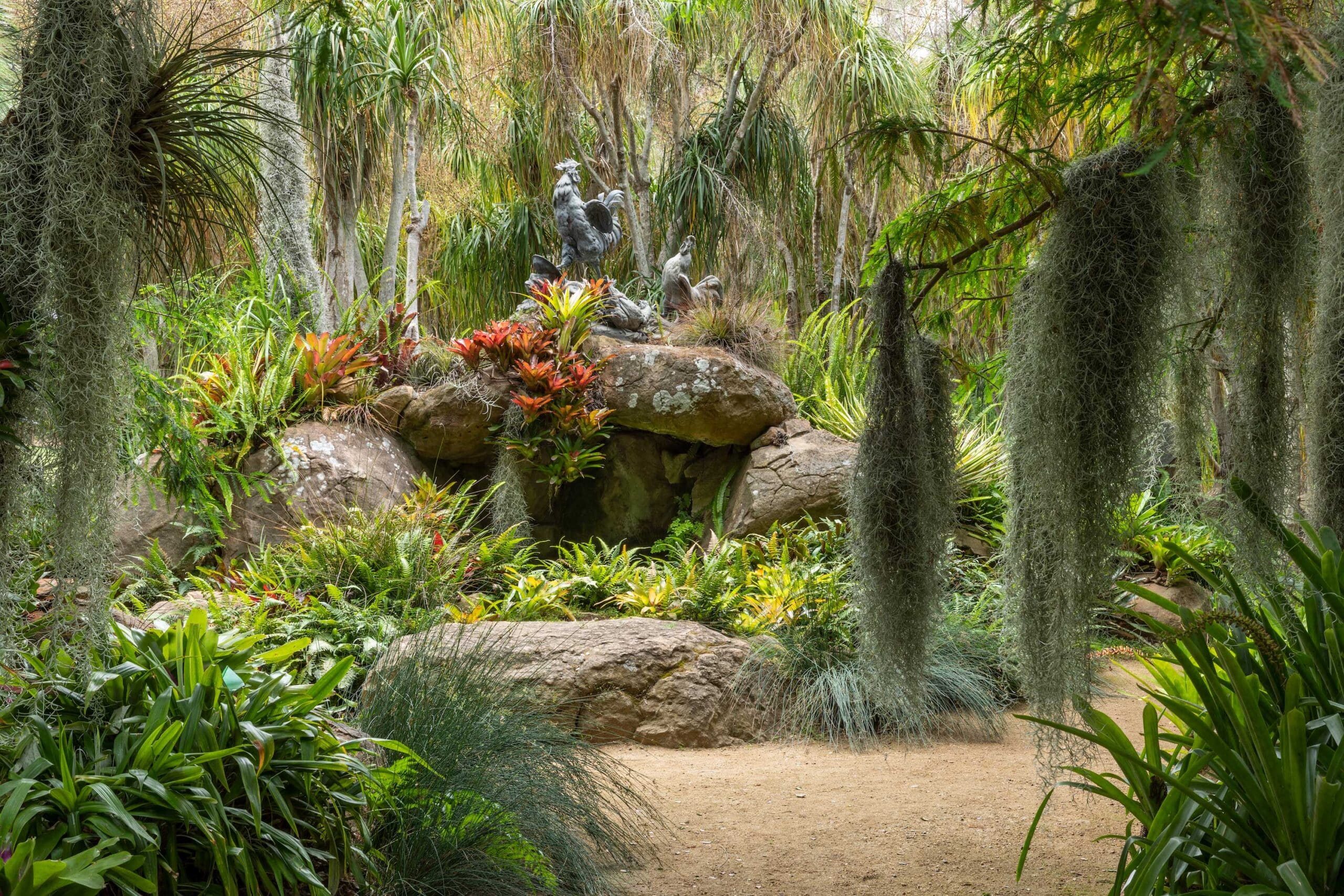
Rooster Grotto
The Rooster Grotto was designed by Madame Ganna Walska’s stonemason, Ozwald Da Ros, and is topped by two cast lead roosters and one hen from her Chateau de Galluis in France.
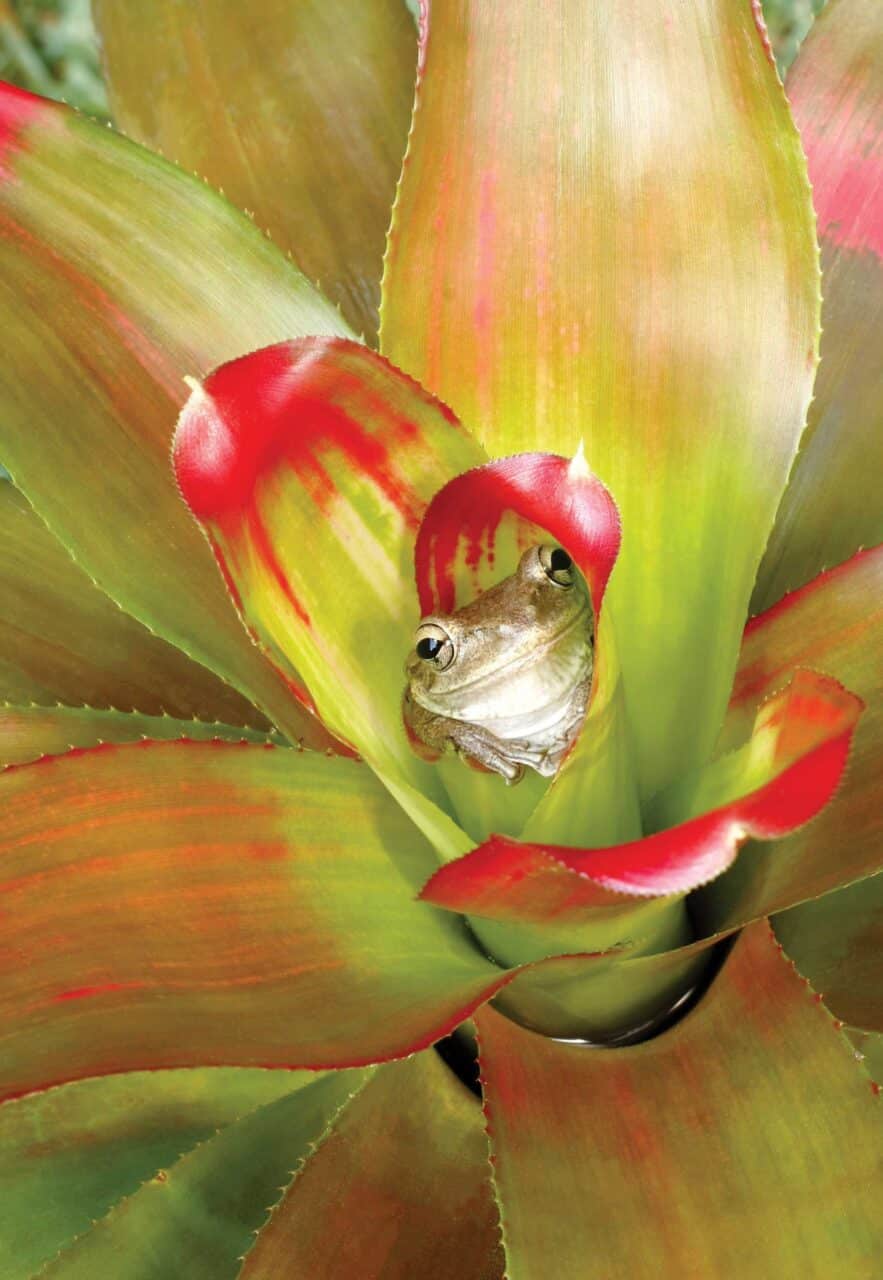
Bromeliad-Frog Mutualism
The ecosystem inside the water reservoir of a tank bromeliad is incredibly complex. Inside, several hundred species of aquatic organisms can be found including fungi, algae, protozoa, small invertebrates such as insects and spiders as well as vertebrates such as frogs, salamanders, and snakes. Frogs use the reservoirs inside tank bromeliads to lay eggs and rear tadpoles with mosquito larvae serving as a good food source. The bromeliad benefits from this relationship through the increased uptake of nutrients left by all these living organisms.
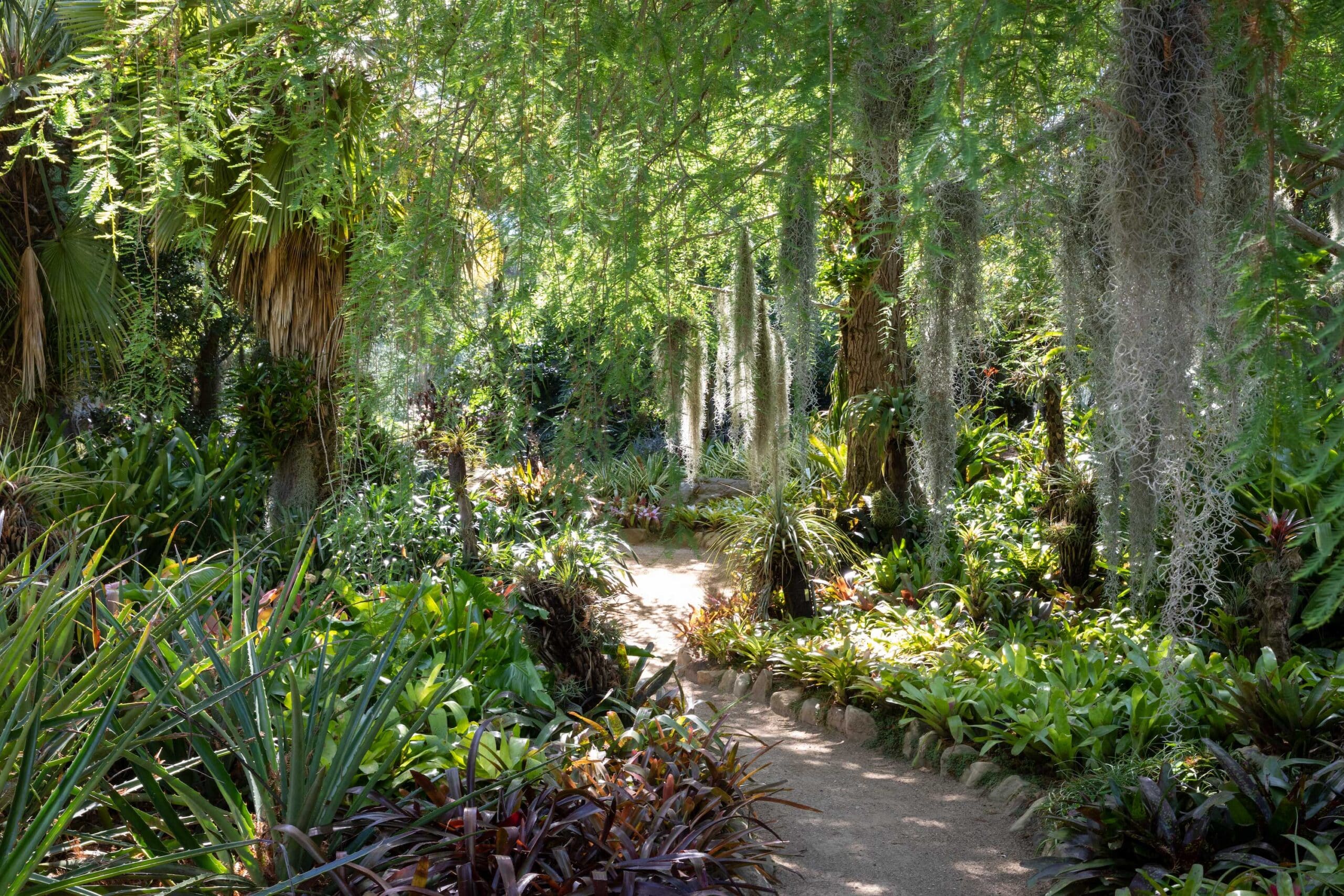
Pineapple (Ananas comosus)
The pineapple was originally discovered in tropical areas of South America (mainly Brazil). During the 1500s and 1600s, pineapples were distributed on ships and today it is one of the most popular fruits in the world. The photo above shows a variegated relative, Ananas comosus v. bracteatus ‘Tricolor’, of the domesticated pineapples that is not typically grown for its fruit, but rather for its beautiful foliage.
Design Inspiration
Bromeliads are well suited for landscaping beneath coast live oaks (Quercus agrifolia) because they do not require deep watering, which is detrimental to the oaks in summer. In Lotusland’s Upper and Lower Bromeliad Gardens, more than 300 types of bromeliads co-exist in close proximity, creating a showcase of the variety and diversity of these plants.
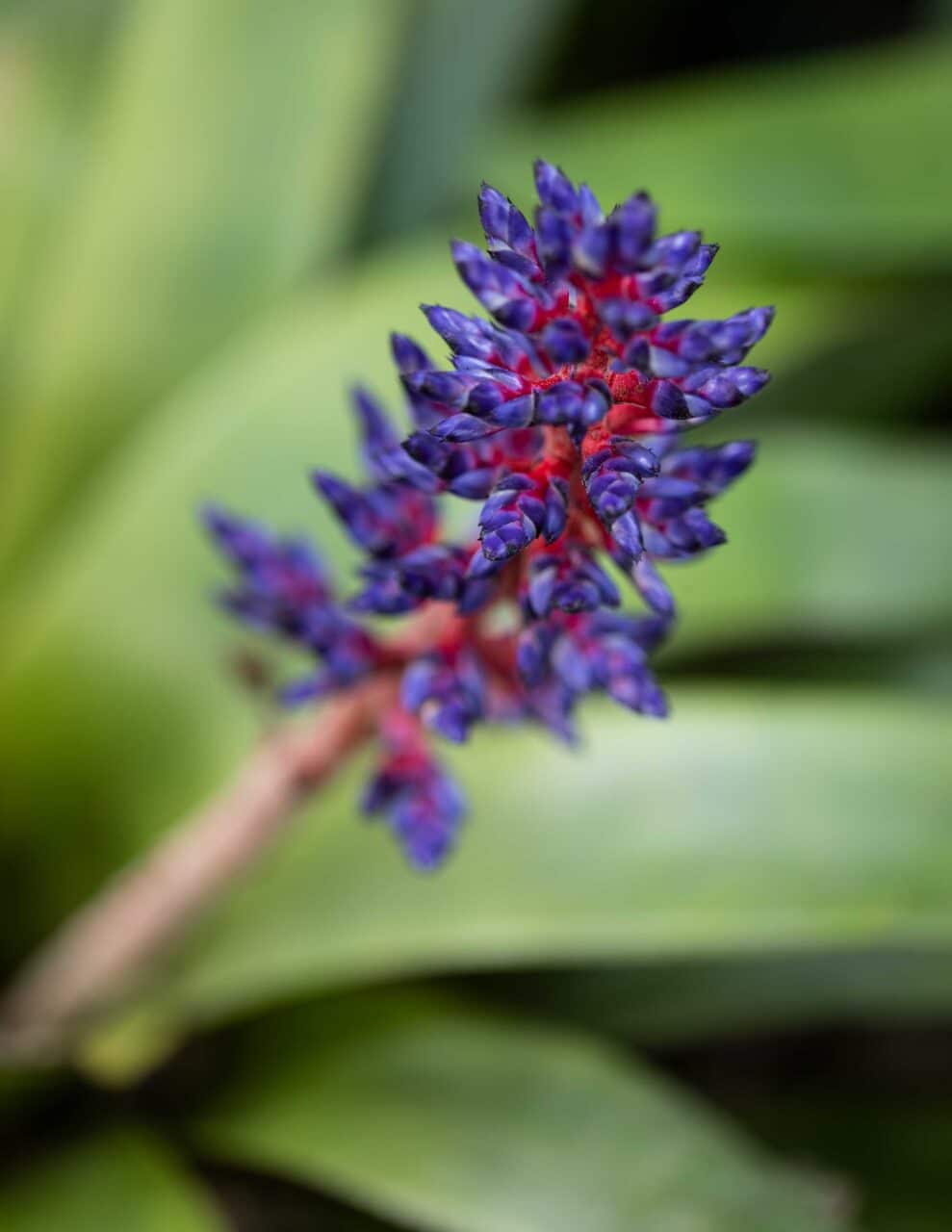
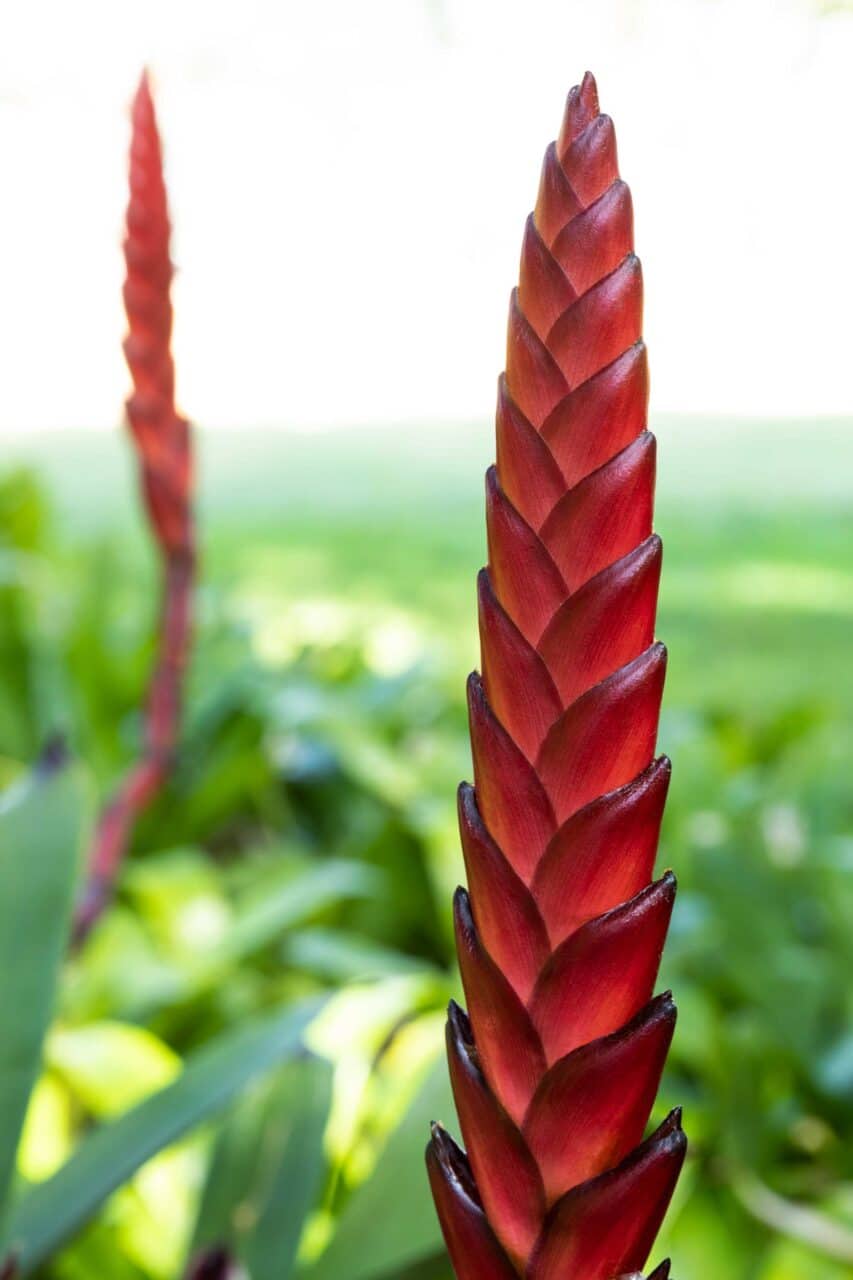
Notable Species
Bromeliads: Alcantarea imperialis, Neoregelia carolinae, Aechmea ‘Del Mar’, Aechmea gamosepala, Billbergia sanderiana, Vriesea platynema, Ananas comosus var. bracteatus ‘Tricolor’ – variegated pineapple, Tillandsia usneoides – Spanish moss
Other Plants: a branched Phoenix roebelenii – pygmy date palm, Trithrinax brasiliensis – Brazilian caranda palm, and a grove of Beaucarnea recurvata – ponytail palm
DID YOU KNOW?
Lotusland’s Bromeliad Gardens have been lovingly developed and tended by 40+ year veteran Gardener, Mike Furner, who worked for Madame Walska when the home was her private estate.
